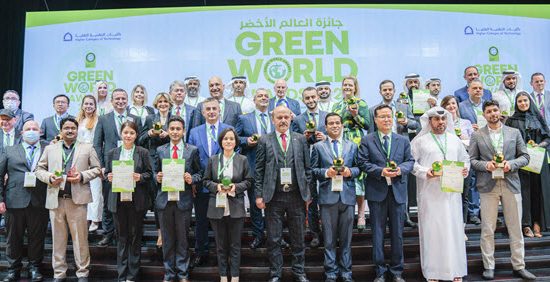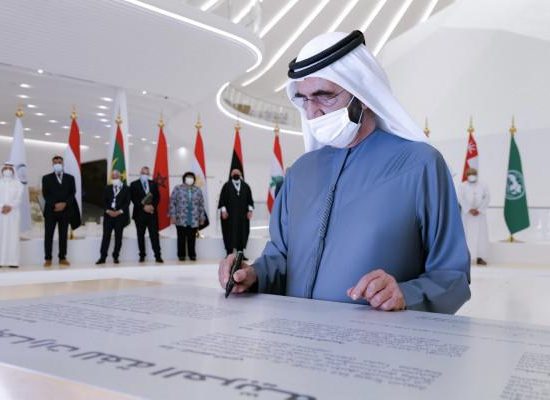UAE. Dubai continued to see steady supply growth during the first six months of the year, as performance within the residential and hospitality markets began to soften after a three year period of sustained growth, according to the Q2 2015 Dubai MarketView by global property consulting firm CBRE.
According to the CBRE report, Dubai’s rental market continues to outperform the transactional market in 2015, although residential leasing rates are beginning to witness marginal declines. This reflects the relative strength of the Dubai economy and the sustained levels of occupier demand, against the emergence of weaker sentiment in the sales market, particularly for completed and ready-to-occupy properties.
Mat Green, Head of Research & Consultancy UAE, CBRE Middle East said, “Average residential sales prices have fallen by around 2.0% quarter on quarter, mirroring the decline recorded in the first quarter. This reflects the current weakening of demand, as well as global economic conditions that have negatively impacted investor sentiment.”
Despite the declines recorded during H1 2015, sales prices still remain around 1% higher than the same period last year. As has been the trend in recent times, Downtown Dubai, Dubai Marina, Emirates Living and Palm Jumeirah continue to generate the bulk of transactions, noted the report.
“Whilst there was an overall decline in average sales values, certain submarkets actually saw more pronounced declines. Interestingly, the largest value drops were recorded in prime areas, with more affordable locations in many cases outperforming,” further added Green.
According to the report, as the market has started to cool over the past year, payment plans have become an increasingly important driver of the investment decision for off-plan properties, sometimes even outweighing price per square foot. Flexible, back weighted payment plans are allowing investors and end-users to secure properties with a minimal initial down payment and low instalments, with a large lump sum paid upon or after completion.
“Similar to the sales market, the rental market has also seen marginal deflation in rates during Q2 2015, posting the first quarterly drop since 2011. Rentals within the villa market saw the steepest decline, falling by an average of 3%, as compared to a 2% dip in apartment rentals. Higher end areas, including Dubai Marina, JBR, Palm Jumeirah, Greens and JLT, have actually suffered some of the heaviest declines, with rental rates falling between 1-4%,” further commented Green.
Rates in many secondary locations remained unchanged, including Al Nahda, Hor Al Anz and Discovery Gardens, reinforcing the resilience of Dubai’s low-cost housing options and reflecting the continued flight to affordability. However, as the pace of rental declines picks up pace, we would expect to see a gradual reversal of this trend as occupiers start to focus on quality, although this is unlikely to emerge until 2016.
Hotels in Dubai continue to be impacted by the strengthening dollar and depreciation of the euro and ruble, which have reduced Dubai’s affordability for many of its primary source markets, stated the report. In May, Revenue Per Available Room (RevPAR) fell 8.3% to AED 764 year-to-date compared to the same period of the previous year.”
“The decline was attributed to the combined effects of lower Average Daily Rates (ADR) and occupancy levels, which fell 6.9% and 1.5 percentage points, respectively, according to STR Global. Although the Dubai hotel market saw performance soften during the first five months of the year, demand remained rather robust, with occupancies and ADR averaging 83.8% and AED 913, respectively,” stated Green.
In conjunction with global economic uncertainty, average rates may face additional downward pressure from the continued delivery of hotel room supply. Dubai currently has around 28,000 keys in various stages of development that are set to be delivered by 2018.
“The phasing of development over the next five years will have a substantial impact on supply and demand dynamics, particularly in light of the Expo 2020. The submarkets of Jumeirah Beach/Palm Jumeirah, Business Bay and Dubai Marina/JBR are set to witness the highest growth in the coming years,” further added Green.
According to the report, the office market remained broadly stable, residential rents are starting to slide and reflect Dubai’s general shift in sentiment. Average CBD office rentals remained unchanged at AED1,884/m²/annum, with flat rates now recorded for the fifth consecutive quarter, reflecting the stability of the marketplace.
Secondary office locations have witnessed a marginal increase in performance during the quarter, with average rents rising from AED1,170/m2/annum in Q1 2015 to AED1,175/m2/annum in Q2 2015. However, year on year, the increase is around 2.3%.
“Over the past 12 months, there has been a notable rise in pre-leasing activity for Grade A offices, which underlines current demand for high quality accommodation sought by corporate occupiers. This suggests that Dubai is starting to align more with mature international market standards, a point that is also reinforced by the gradual slowdown in development and delivery of strata style offices,” added Green.
The total office stock during Q2 2015 stood at around 8.2 million m². Approximately 0.3 million square metres is still scheduled to be delivered by the end of the year-end, depending on the pace of construction.
Commenting on the outlook for the market, Green concluded, “The delivery of substantial supply across the residential and hospitality markets during 2015, is likely to place additional pressure on prices and average rates which have witnessed high growth over the past three years. It is also expected that the appreciation of the real exchange rate will compress performance across all asset classes and reduce investor sentiment in the short term.
“Although lower oil prices have had little impact on the real estate market to date, Dubai could potentially see the projects being scaled back as developers become more cautious about spending amidst ongoing uncertainties.”
About CBRE Group, Inc.
CBRE Group, Inc. (NYSE:CBG), a Fortune 500 and S&P 500 company headquartered in Los Angeles, is the world’s largest commercial real estate services and investment firm (in terms of 2014 revenue). The Company has more than 52,000 employees (excluding affiliates), and serves real estate owners, investors and occupiers through more than 370 offices (excluding affiliates) worldwide. CBRE offers strategic advice and execution for property sales and leasing; corporate services; property, facilities and project management; mortgage banking; appraisal and valuation; development services; investment management; and research and consulting.
Please visit our website at www.cbre.ae
This entry passed through the Full-Text RSS service – if this is your content and you’re reading it on someone else’s site, please read the FAQ at fivefilters.org/content-only/faq.php#publishers.








